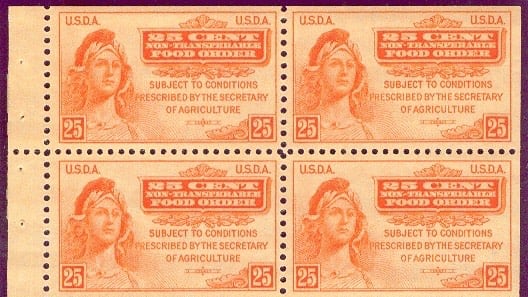Why are they called “food stamps”? Even back in the days before EBT cards, food stamps looked like Monopoly money, not stamps. Why not “food coupons” or “food scrip” or even “food credits”? —Fatboy Slim Pickens
This isn’t TikTok, so I assume most of you remember paper food stamps. But if you’re too young or too rich to be familiar with them, food stamps used to come as paper notes, in $1, $5, $10 and $20 denominations just like real money. Printed with mintlike care to foil counterfeiters, they may not have been as fancy as traveler’s checks (try explaining those on TikTok), but they were at least as well done as regular U.S. banknotes, which were even shittier back then than they are now.
Until 1990, when electronic benefits transfer, or EBT, cards were introduced, every modern food stamp in America came in this form. (Even then, the transition was slow enough that Elliott Smith could still trade a smoke for a $1 food stamp in his 1997 song “Rose Parade.”) The program finally went all electronic in 2004, and in all that time, food stamps never once looked like anything you could stick on an envelope. To find a reason for the name we have to go all the way back to the Great Depression.
In 1930s, due to reduced demand caused by the fact that nobody had money for groceries, agricultural prices were in the toilet. Many farmers had surplus crops that weren’t worth taking to market, even though regular people were starving. To address this, the Roosevelt administration created a program in 1939 where you could buy $1.50 in “food stamps” for a dollar—provided you spent the extra 50 cents on products made from the surplus crops. And yes, Virginia, they really did look like stamps.
By 1943, World War II solved the demand problem and the program was canceled after just four years. Nevertheless, when the modern food stamp program was created, in 1961, people still insisted on calling the cashlike coupons “food stamps,” even though stamplike food stamps had been extinct for 18 years.
And they still do it today! It’s been 80 years since food stamps were stamps, and 20 years since they were physical objects of any kind, but people still use the outdated term. It just shows how, once the public gets an idea in its head, it can be exceedingly hard to dislodge. (Ask Richard Gere about this sometime.)
Questions? Send them to dr.know@wweek.com.
